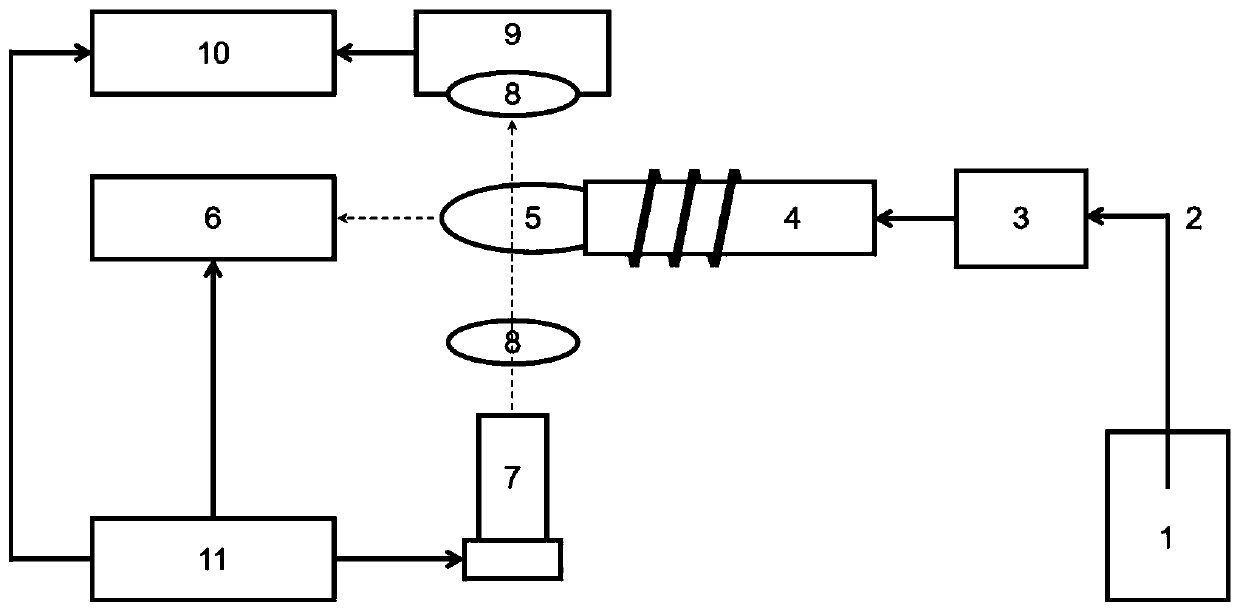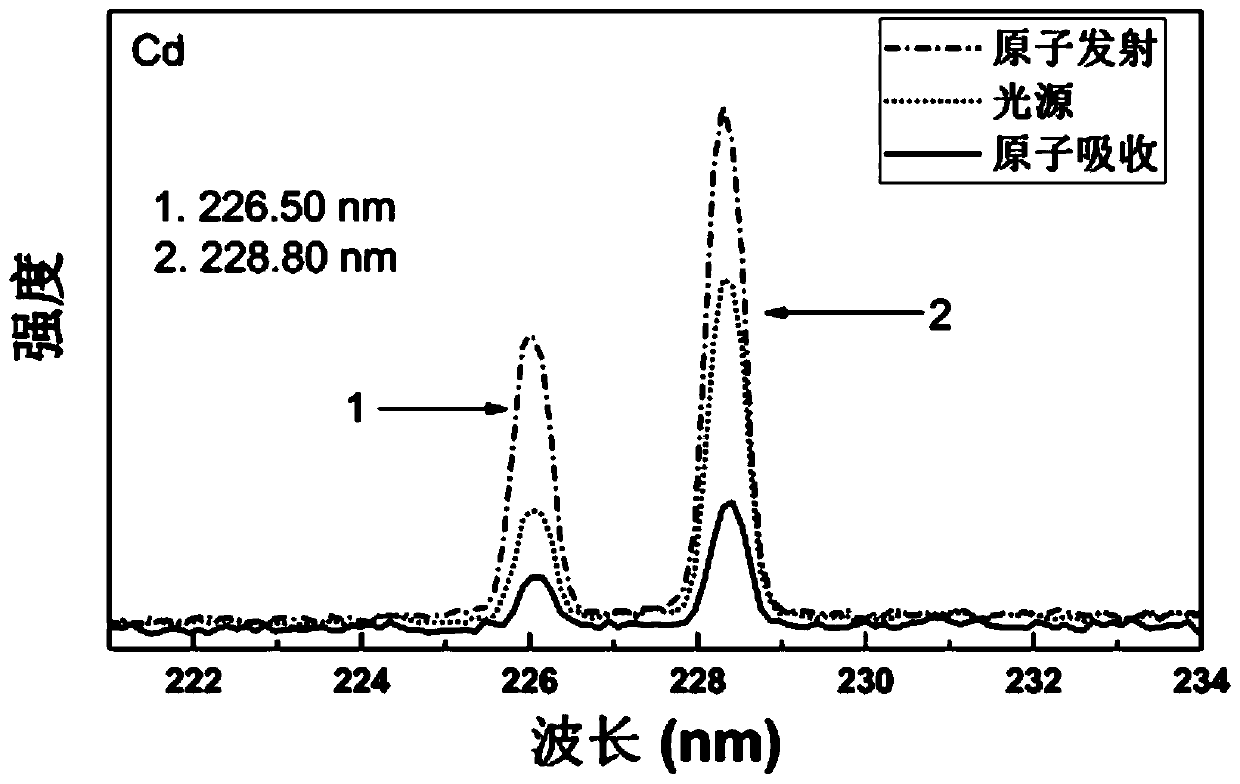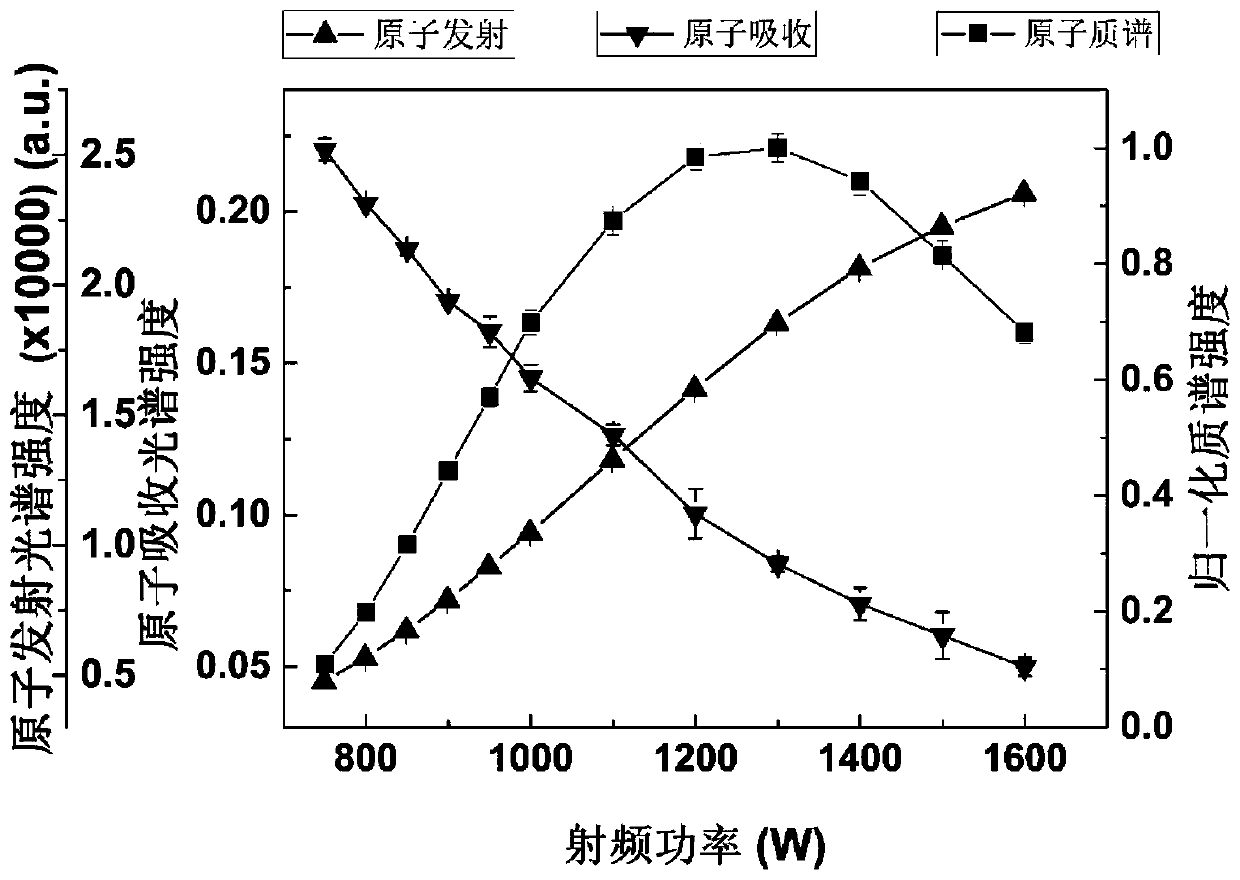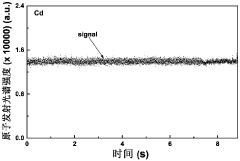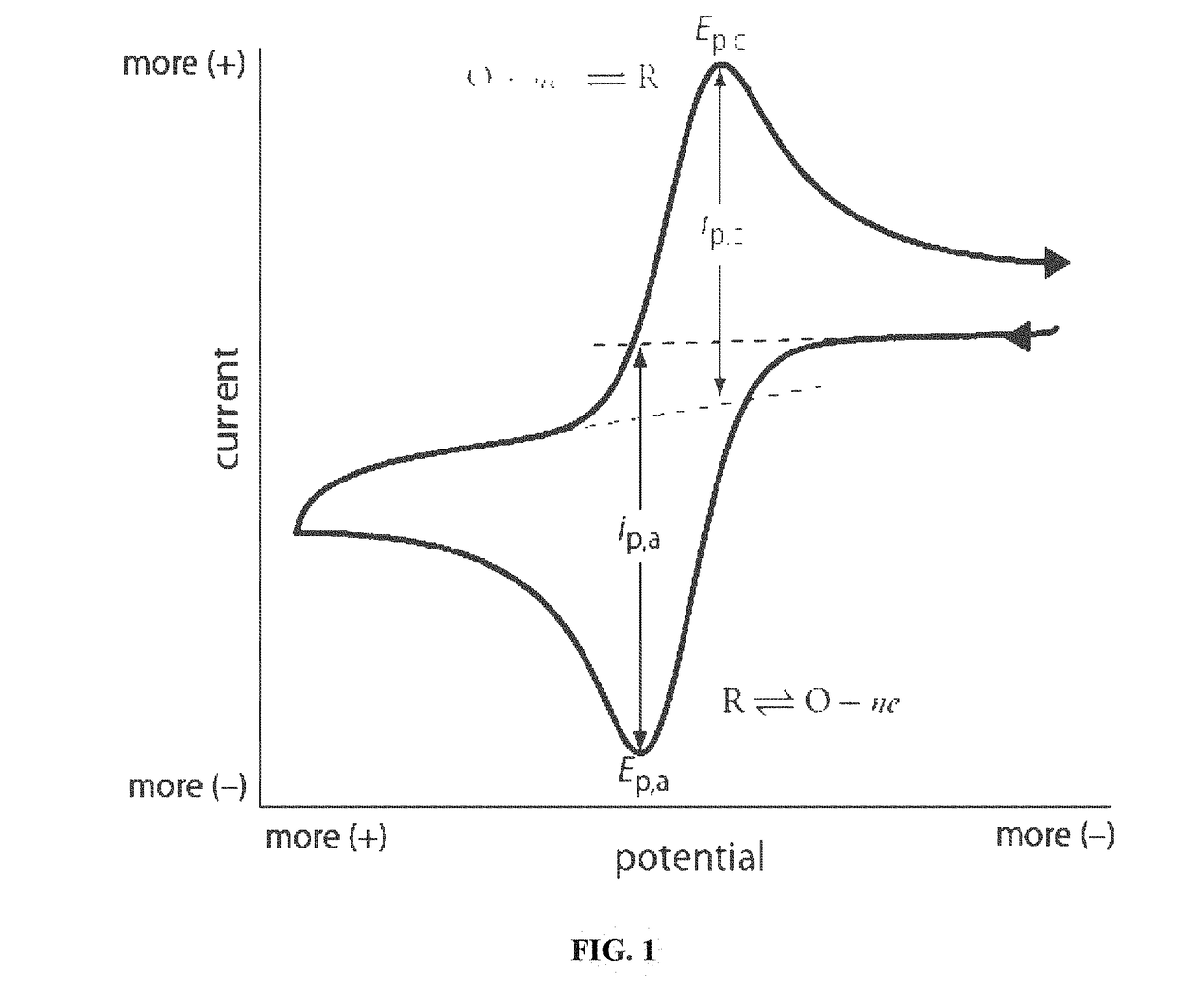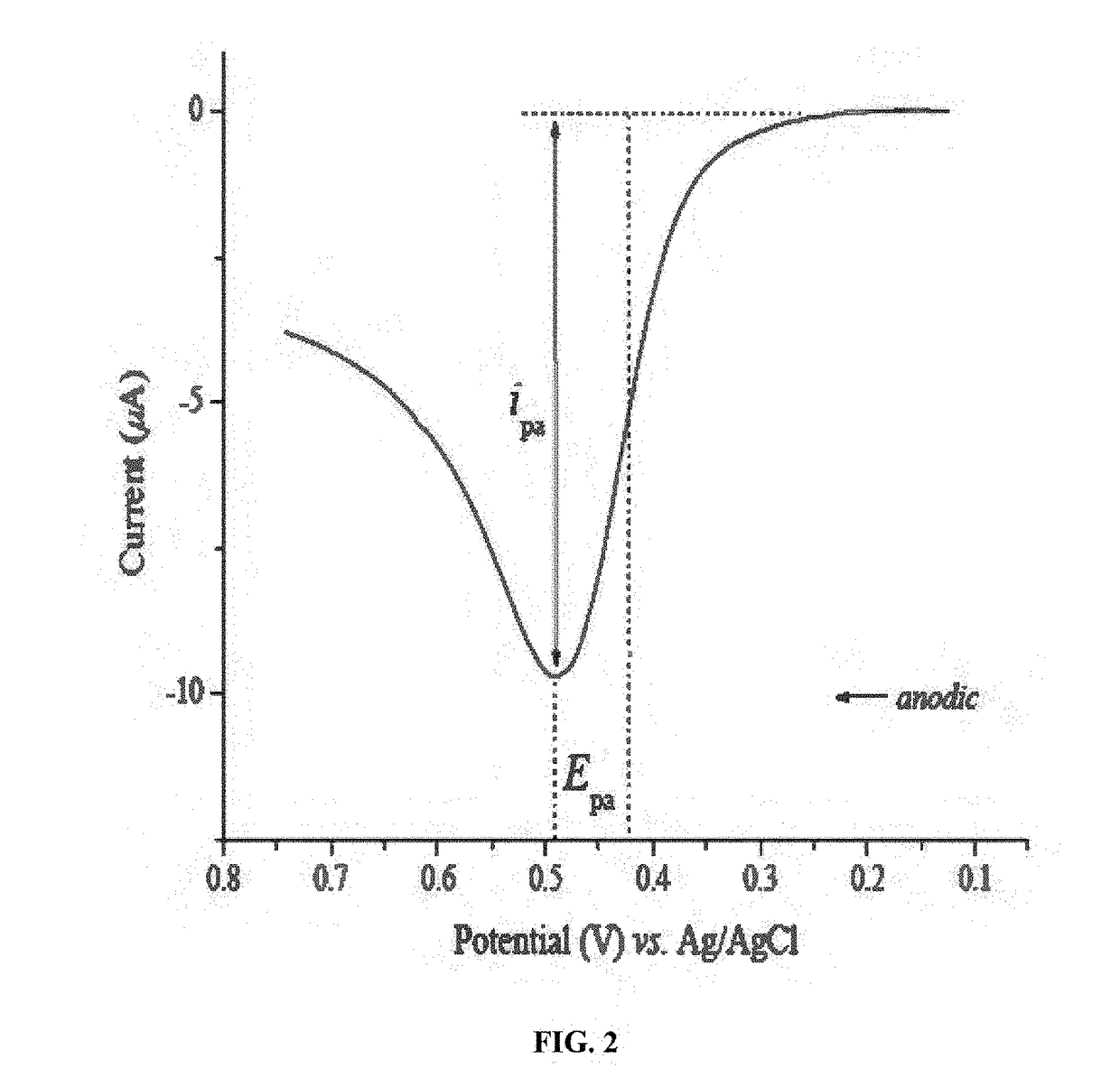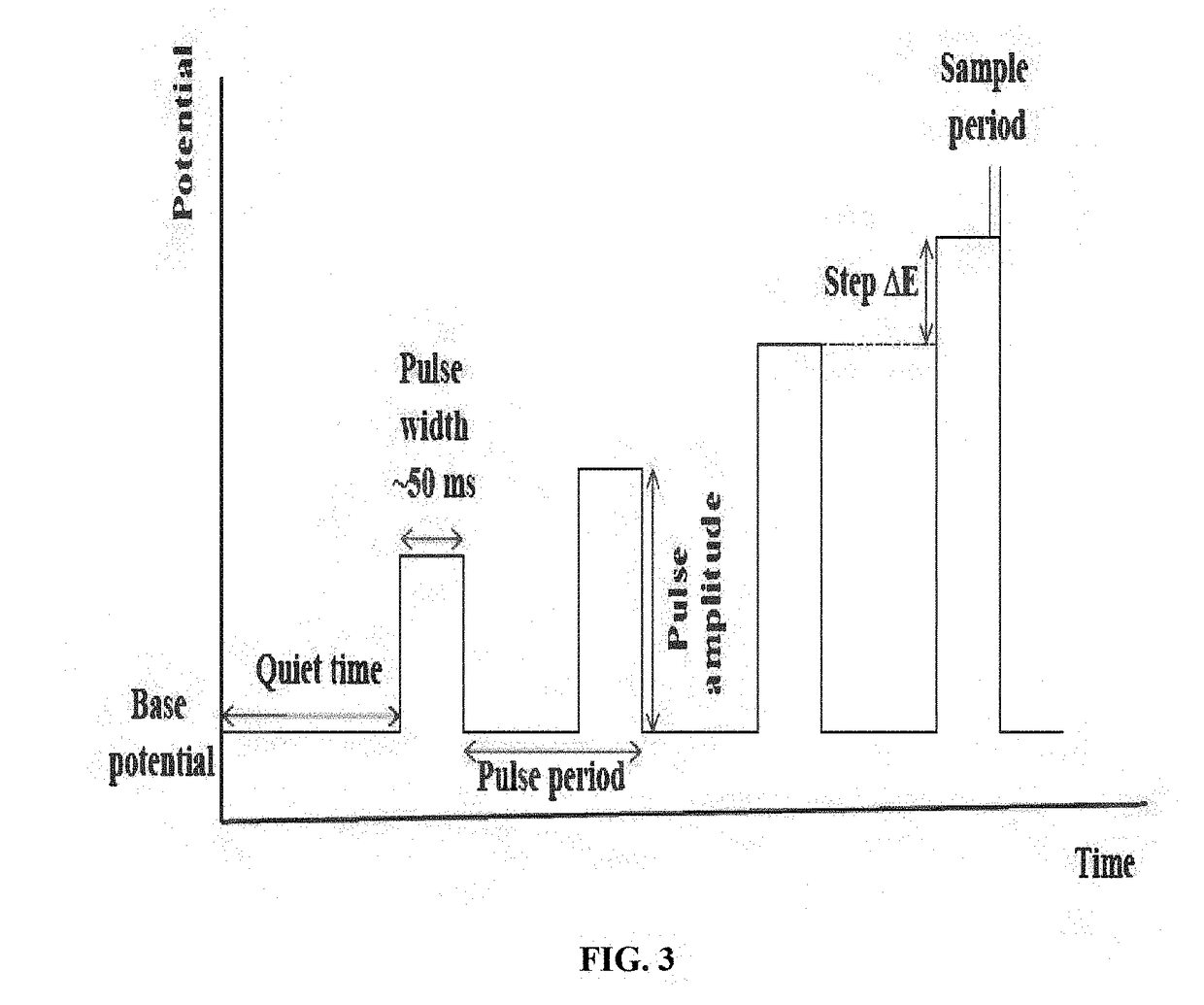ICP-OES Axial Vs Radial View: Sensitivity, Robustness And Matrix Tolerance
SEP 22, 20259 MIN READ
Generate Your Research Report Instantly with AI Agent
Patsnap Eureka helps you evaluate technical feasibility & market potential.
ICP-OES Technology Evolution and Objectives
Inductively Coupled Plasma Optical Emission Spectrometry (ICP-OES) has evolved significantly since its commercial introduction in the 1970s. Initially developed as a solution to limitations in flame atomic absorption spectroscopy, ICP-OES offered superior detection capabilities for multiple elements simultaneously. The technology leverages high-temperature plasma to excite atoms and ions, which then emit characteristic wavelengths of light that can be measured to determine elemental concentrations.
Early ICP-OES systems primarily utilized radial viewing configurations, where the plasma was observed from the side. This approach provided reasonable analytical performance but suffered from limited sensitivity for many elements. The 1990s marked a pivotal advancement with the introduction of axial viewing technology, allowing observation along the length of the plasma, significantly enhancing detection limits for many elements.
The evolution of ICP-OES has been driven by demands for lower detection limits, improved precision, and the ability to analyze increasingly complex sample matrices across various industries including environmental monitoring, pharmaceuticals, metallurgy, and food safety. These requirements have pushed technological development toward dual-view systems that combine both axial and radial viewing capabilities.
Concurrent with viewing geometry advancements, significant improvements have occurred in spectrometer design, detector technology, and sample introduction systems. The transition from photomultiplier tubes to charge-coupled devices (CCDs) and charge-injection devices (CIDs) has enabled simultaneous multi-element analysis with enhanced spectral resolution. Modern solid-state detectors allow for complete spectrum acquisition in seconds, dramatically improving analytical throughput.
Software and data processing capabilities have similarly evolved, with sophisticated algorithms for background correction, interference compensation, and automated quality control. These developments have transformed ICP-OES from a specialist technique to a routine analytical tool accessible to laboratories worldwide.
The primary technical objective in the axial versus radial viewing debate centers on optimizing the balance between sensitivity, robustness, and matrix tolerance. Axial viewing typically offers 5-10 times better detection limits than radial viewing but can suffer from greater matrix interferences. Radial viewing provides superior tolerance to complex matrices but with reduced sensitivity.
Current research aims to develop systems that dynamically optimize viewing configurations based on sample characteristics and analytical requirements. This includes advanced optical systems that can rapidly switch between viewing modes or simultaneously collect data from both perspectives, along with intelligent software that can determine optimal conditions for specific analytical challenges.
Early ICP-OES systems primarily utilized radial viewing configurations, where the plasma was observed from the side. This approach provided reasonable analytical performance but suffered from limited sensitivity for many elements. The 1990s marked a pivotal advancement with the introduction of axial viewing technology, allowing observation along the length of the plasma, significantly enhancing detection limits for many elements.
The evolution of ICP-OES has been driven by demands for lower detection limits, improved precision, and the ability to analyze increasingly complex sample matrices across various industries including environmental monitoring, pharmaceuticals, metallurgy, and food safety. These requirements have pushed technological development toward dual-view systems that combine both axial and radial viewing capabilities.
Concurrent with viewing geometry advancements, significant improvements have occurred in spectrometer design, detector technology, and sample introduction systems. The transition from photomultiplier tubes to charge-coupled devices (CCDs) and charge-injection devices (CIDs) has enabled simultaneous multi-element analysis with enhanced spectral resolution. Modern solid-state detectors allow for complete spectrum acquisition in seconds, dramatically improving analytical throughput.
Software and data processing capabilities have similarly evolved, with sophisticated algorithms for background correction, interference compensation, and automated quality control. These developments have transformed ICP-OES from a specialist technique to a routine analytical tool accessible to laboratories worldwide.
The primary technical objective in the axial versus radial viewing debate centers on optimizing the balance between sensitivity, robustness, and matrix tolerance. Axial viewing typically offers 5-10 times better detection limits than radial viewing but can suffer from greater matrix interferences. Radial viewing provides superior tolerance to complex matrices but with reduced sensitivity.
Current research aims to develop systems that dynamically optimize viewing configurations based on sample characteristics and analytical requirements. This includes advanced optical systems that can rapidly switch between viewing modes or simultaneously collect data from both perspectives, along with intelligent software that can determine optimal conditions for specific analytical challenges.
Market Applications and Analytical Demands
The ICP-OES market is experiencing robust growth driven by increasing demand for elemental analysis across multiple industries. The global market for ICP-OES instrumentation was valued at approximately $850 million in 2022 and is projected to grow at a CAGR of 6.8% through 2028, reflecting the expanding applications and analytical requirements.
Environmental monitoring represents one of the largest application segments, where ICP-OES is extensively used for analyzing heavy metals and trace elements in water, soil, and air samples. Regulatory bodies worldwide have established strict monitoring protocols that necessitate sensitive detection capabilities, particularly for toxic elements like arsenic, mercury, and lead at parts-per-billion levels, where axial viewing configurations demonstrate significant advantages.
The pharmaceutical industry demands high sensitivity for impurity profiling and quality control, with requirements for detection limits well below regulatory thresholds. Here, axial view systems are preferred for trace element analysis in drug substances, while radial configurations find application in higher concentration matrices where robustness is prioritized over ultimate sensitivity.
In metallurgical applications, the analysis of major, minor, and trace elements in metals and alloys requires instruments capable of handling high dissolved solid content. Radial viewing configurations demonstrate superior performance in these challenging matrices due to their enhanced tolerance to physical and spectral interferences, despite sacrificing some sensitivity.
The semiconductor industry presents perhaps the most demanding analytical requirements, with detection limits in the sub-ppb range needed for ultrapure water and chemicals. The industry's continuous miniaturization trend has intensified the need for lower detection limits, making axial view systems essential despite the clean matrix environment.
Food and beverage testing laboratories require both sensitivity for toxic element screening and robustness for handling complex organic matrices. This application area often benefits from dual-view systems that can switch between axial and radial viewing modes depending on the specific analytical task.
Clinical laboratories utilize ICP-OES for analyzing biological fluids, where matrix effects can be significant. The need for high sample throughput and reliability in these settings has driven demand for systems with enhanced matrix tolerance, favoring radial or dual-view configurations.
Agricultural analysis presents unique challenges with samples containing high levels of dissolved solids and organic matter. While sensitivity requirements are generally less stringent than in environmental applications, the complex matrices necessitate robust systems capable of handling interference effects, making radial viewing particularly suitable for routine analysis.
Environmental monitoring represents one of the largest application segments, where ICP-OES is extensively used for analyzing heavy metals and trace elements in water, soil, and air samples. Regulatory bodies worldwide have established strict monitoring protocols that necessitate sensitive detection capabilities, particularly for toxic elements like arsenic, mercury, and lead at parts-per-billion levels, where axial viewing configurations demonstrate significant advantages.
The pharmaceutical industry demands high sensitivity for impurity profiling and quality control, with requirements for detection limits well below regulatory thresholds. Here, axial view systems are preferred for trace element analysis in drug substances, while radial configurations find application in higher concentration matrices where robustness is prioritized over ultimate sensitivity.
In metallurgical applications, the analysis of major, minor, and trace elements in metals and alloys requires instruments capable of handling high dissolved solid content. Radial viewing configurations demonstrate superior performance in these challenging matrices due to their enhanced tolerance to physical and spectral interferences, despite sacrificing some sensitivity.
The semiconductor industry presents perhaps the most demanding analytical requirements, with detection limits in the sub-ppb range needed for ultrapure water and chemicals. The industry's continuous miniaturization trend has intensified the need for lower detection limits, making axial view systems essential despite the clean matrix environment.
Food and beverage testing laboratories require both sensitivity for toxic element screening and robustness for handling complex organic matrices. This application area often benefits from dual-view systems that can switch between axial and radial viewing modes depending on the specific analytical task.
Clinical laboratories utilize ICP-OES for analyzing biological fluids, where matrix effects can be significant. The need for high sample throughput and reliability in these settings has driven demand for systems with enhanced matrix tolerance, favoring radial or dual-view configurations.
Agricultural analysis presents unique challenges with samples containing high levels of dissolved solids and organic matter. While sensitivity requirements are generally less stringent than in environmental applications, the complex matrices necessitate robust systems capable of handling interference effects, making radial viewing particularly suitable for routine analysis.
Current Challenges in Axial and Radial Viewing Modes
Despite significant advancements in ICP-OES technology, both axial and radial viewing modes continue to face distinct technical challenges that limit their optimal performance across various analytical scenarios. The axial viewing mode, while offering superior sensitivity, suffers from severe matrix effects, particularly in samples with high dissolved solid content. This results in signal suppression or enhancement that compromises measurement accuracy, especially at the tail end of the plasma where cooler regions can cause recombination interferences.
Signal saturation represents another significant challenge for axial viewing, as the extended optical path through the plasma can lead to detector saturation when analyzing high-concentration elements. This necessitates additional sample dilution steps, increasing analysis time and potential for error introduction.
Radial viewing configurations, though more robust against matrix effects, struggle with detection limit constraints. The perpendicular observation approach captures only a small cross-section of emission, resulting in significantly reduced sensitivity compared to axial systems—often by a factor of 5-10 times for many elements. This limitation makes radial viewing less suitable for trace element analysis in environmental or biological samples.
Both viewing modes face challenges with spectral interferences, though manifesting differently. Axial systems encounter more complex background spectra due to the longer observation path, while radial systems must contend with spatial variations in spectral interferences across the plasma profile. Current software-based correction algorithms remain imperfect, particularly for complex, variable matrices.
Plasma stability issues affect both configurations but present unique challenges. Axial systems are more susceptible to plasma fluctuations caused by sample introduction variations, while radial systems struggle with maintaining consistent viewing height optimization across diverse sample types. The compromise between robust operation and analytical sensitivity remains a fundamental challenge.
Instrument manufacturers have attempted to address these limitations through dual-view systems, but these hybrid approaches introduce their own complications, including increased mechanical complexity, higher maintenance requirements, and longer analysis times when switching between viewing modes. The optical alignment precision required for dual-view systems presents ongoing reliability challenges in routine laboratory environments.
The development of effective matrix-matched calibration standards remains problematic for both viewing modes, particularly for complex environmental and industrial samples where matrix composition can vary significantly between samples, limiting the achievable accuracy in real-world applications.
Signal saturation represents another significant challenge for axial viewing, as the extended optical path through the plasma can lead to detector saturation when analyzing high-concentration elements. This necessitates additional sample dilution steps, increasing analysis time and potential for error introduction.
Radial viewing configurations, though more robust against matrix effects, struggle with detection limit constraints. The perpendicular observation approach captures only a small cross-section of emission, resulting in significantly reduced sensitivity compared to axial systems—often by a factor of 5-10 times for many elements. This limitation makes radial viewing less suitable for trace element analysis in environmental or biological samples.
Both viewing modes face challenges with spectral interferences, though manifesting differently. Axial systems encounter more complex background spectra due to the longer observation path, while radial systems must contend with spatial variations in spectral interferences across the plasma profile. Current software-based correction algorithms remain imperfect, particularly for complex, variable matrices.
Plasma stability issues affect both configurations but present unique challenges. Axial systems are more susceptible to plasma fluctuations caused by sample introduction variations, while radial systems struggle with maintaining consistent viewing height optimization across diverse sample types. The compromise between robust operation and analytical sensitivity remains a fundamental challenge.
Instrument manufacturers have attempted to address these limitations through dual-view systems, but these hybrid approaches introduce their own complications, including increased mechanical complexity, higher maintenance requirements, and longer analysis times when switching between viewing modes. The optical alignment precision required for dual-view systems presents ongoing reliability challenges in routine laboratory environments.
The development of effective matrix-matched calibration standards remains problematic for both viewing modes, particularly for complex environmental and industrial samples where matrix composition can vary significantly between samples, limiting the achievable accuracy in real-world applications.
Comparative Analysis of Axial vs Radial Techniques
01 Enhancing ICP-OES sensitivity through optical design
Optical design improvements in ICP-OES systems can significantly enhance sensitivity. These include advanced spectrometer configurations, optimized light path designs, and improved detector systems that can capture more emission signals with reduced noise. Enhanced optical components such as high-precision mirrors, gratings, and lenses contribute to better light collection efficiency, resulting in lower detection limits and improved analytical performance for trace element analysis.- Enhancing ICP-OES sensitivity through optical design: Optical design improvements in ICP-OES systems can significantly enhance sensitivity. These include advanced spectrometer configurations, optimized light path designs, and improved detector systems that reduce background noise and increase signal-to-noise ratios. Innovations such as echelle gratings, specialized mirrors, and enhanced focusing mechanisms allow for better light collection efficiency and spectral resolution, enabling detection of lower concentrations of elements in samples.
- Matrix tolerance enhancement techniques: Various techniques have been developed to improve the matrix tolerance of ICP-OES systems, allowing for analysis of complex sample matrices without significant interference. These include sample preparation methods, matrix matching calibration approaches, and instrumental modifications such as specialized nebulizers and spray chambers. Advanced software algorithms for matrix correction and internal standardization further enhance the ability to analyze samples with high dissolved solids or complex organic matrices.
- Plasma robustness optimization methods: Improving plasma robustness in ICP-OES involves optimizing radio frequency power settings, gas flow rates, and torch design. Enhanced plasma stability allows for consistent analysis across varying sample types and concentrations. Innovations include specialized torch designs, improved RF generators, and gas flow control systems that maintain plasma stability even when introducing challenging samples. These advancements reduce matrix effects and improve long-term analytical performance.
- Sample introduction system innovations: Advanced sample introduction systems significantly impact ICP-OES performance metrics. Innovations include high-efficiency nebulizers, temperature-controlled spray chambers, and desolvation systems that improve sample transport efficiency and reduce matrix effects. Specialized introduction systems for high-salt matrices, organic solvents, and slurries expand the application range of ICP-OES while maintaining sensitivity and precision. These systems help overcome traditional limitations in analyzing challenging sample types.
- Calibration and data processing advancements: Sophisticated calibration strategies and data processing algorithms enhance ICP-OES analytical performance. These include multi-element internal standardization, weighted regression models, and advanced background correction techniques. Machine learning algorithms for spectral interference correction and automated optimization of analytical parameters improve accuracy and precision. These computational approaches compensate for matrix effects and instrumental drift, resulting in more reliable quantitative analysis across diverse sample types.
02 Matrix tolerance improvements in ICP-OES
Various approaches have been developed to improve matrix tolerance in ICP-OES systems, allowing for analysis of complex sample matrices with minimal interference. These include specialized sample introduction systems, matrix-matched calibration methods, and internal standardization techniques. Advanced plasma control mechanisms help maintain stable plasma conditions even when analyzing samples with high dissolved solids or organic content, reducing matrix effects and improving measurement accuracy in challenging sample types.Expand Specific Solutions03 Robustness enhancements through plasma control
Improving the robustness of ICP-OES systems involves sophisticated plasma control mechanisms that maintain stable analytical conditions despite variations in sample composition. This includes advanced RF generators with precise power control, optimized gas flow systems, and temperature regulation. These enhancements allow for consistent performance over extended analytical runs, reduced drift, and better tolerance to challenging sample matrices, ultimately improving measurement reliability and reducing the need for frequent recalibration.Expand Specific Solutions04 Sample introduction innovations for improved performance
Novel sample introduction systems have been developed to enhance ICP-OES performance across sensitivity, robustness, and matrix tolerance parameters. These include specialized nebulizers, spray chambers with improved droplet selection, and desolvation systems that reduce solvent load to the plasma. Advanced sample preparation techniques integrated with the introduction system can minimize matrix effects while maximizing analyte transport efficiency, resulting in better detection limits and more stable analytical signals.Expand Specific Solutions05 Data processing and calibration methods for enhanced analytical performance
Sophisticated data processing algorithms and calibration strategies have been developed to improve ICP-OES analytical performance. These include advanced background correction techniques, spectral interference correction methods, and multivariate calibration approaches. Machine learning and artificial intelligence applications help optimize instrument parameters in real-time based on sample characteristics, while automated quality control procedures ensure consistent analytical results even with complex sample matrices or when measuring near detection limits.Expand Specific Solutions
Leading Manufacturers and Research Institutions
The ICP-OES Axial vs Radial View technology market is in a mature growth phase, with an estimated global market size of $1.2-1.5 billion and steady annual growth of 4-6%. The competitive landscape features established analytical instrument manufacturers like SPECTRO Analytical Instruments GmbH, which specializes in elemental analysis solutions, alongside diversified scientific equipment providers. The technology demonstrates high maturity with well-defined applications in environmental monitoring, pharmaceuticals, and industrial quality control. Companies like Halliburton Energy Services utilize these technologies for resource analysis, while research institutions such as the University of Rochester contribute to ongoing refinements in sensitivity and matrix tolerance capabilities, driving incremental innovation rather than disruptive advancements.
Halliburton Energy Services, Inc.
Technical Solution: Halliburton开发了专为石油和天然气行业定制的ICP-OES分析系统,重点解决高盐度、高有机物含量样品的分析挑战。其技术方案采用了创新的双视图切换机制,能够在同一样品分析过程中根据元素特性自动选择最佳观测模式。该系统特别优化了径向视图模式下的基质耐受性,通过改进的等离子体稳定技术和特殊设计的雾化器,能够直接分析含盐量高达25%的样品,无需过度稀释。同时,其轴向视图模式采用了增强型光学系统和先进的背景校正算法,即使在复杂基质中也能实现低至ppb级的检测限。Halliburton还开发了专门的数据处理软件,能够自动识别和校正油田样品中常见的光谱干扰。
优势:专为高盐度、高有机物含量的油田样品优化,具有卓越的基质耐受性;自动视图选择技术提高分析效率和准确性;专业的数据处理软件简化复杂样品分析流程。劣势:系统主要针对石油和天然气行业优化,在其他领域应用可能需要调整;高基质耐受性设计在某些超痕量分析应用中可能牺牲了部分灵敏度;系统维护要求较高,特别是在恶劣环境下使用时。
SPECTRO Analytical Instruments GmbH
Technical Solution: SPECTRO作为分析仪器领域的领导者,开发了双视图ICP-OES系统,允许在同一次分析中同时或顺序使用轴向和径向观测。其SPECTRO ARCOS系统采用独特的MultiView技术,使操作者能够在不中断分析或重新校准的情况下,在轴向和径向视图之间切换。该技术通过光学系统优化,确保在两种视图模式下都能获得最佳性能。轴向视图提供最高灵敏度,适用于痕量元素分析,而径向视图则提供更好的基质耐受性,适用于高基质样品。SPECTRO的系统还采用了先进的背景校正技术和智能算法,以减少光谱干扰并提高测量准确性。
优势:双视图技术提供了分析灵活性,无需重新校准即可在轴向和径向视图间切换,大幅提高工作效率;先进的光学系统设计确保两种模式下都有卓越性能;智能软件算法有效减少干扰。劣势:系统复杂度较高,初始投资和维护成本较大;对操作人员技术要求较高;在某些特定应用场景下,专用单视图系统可能更为经济高效。
Key Patents and Innovations in Plasma Viewing Technology
Inductively coupled plasma atomic mass spectrometry and spectrum simultaneous detection system and method
PatentPendingCN111257253A
Innovation
- Using a simultaneous detection system of atomic mass spectrometry, atomic emission spectrum and atomic absorption spectrum that shares an inductively coupled plasma source, through the combination of mass spectrometry detection system and spectrum detection system, simultaneous detection of atomic mass spectrometry, atomic emission spectrum and atomic absorption spectrum can be achieved, using The plasma torch, mass spectrometry detection unit, spectrum detector and spectrum detection control module realize the simultaneous collection and processing of multiple signals.
Rare earth metal incorporated zeolite modified electrodes for detection and quantification of heavy metal ions in aqueous solution
PatentInactiveUS20170315079A1
Innovation
- Development of rare earth metal impregnated zeolite modified carbon paste electrodes, specifically lanthanum or cerium impregnated mordenite electrodes, for use in square wave anodic stripping voltammetry, enhancing electroactive surface area and detection limits.
Interference Management Strategies in Complex Matrices
Managing interferences in complex matrices represents a critical challenge when utilizing ICP-OES technology, particularly when comparing axial and radial viewing configurations. The selection of appropriate interference management strategies significantly impacts analytical performance and reliability of results across diverse sample types.
Spectral interferences, arising from emission line overlaps, can be addressed through several complementary approaches. High-resolution spectrometers with enhanced optical systems provide superior line separation capabilities, allowing analysts to distinguish between closely positioned spectral lines. This capability proves especially valuable when analyzing samples containing multiple elements with complex emission profiles.
Mathematical correction algorithms offer another powerful tool for interference management. Modern ICP-OES systems incorporate sophisticated software that can perform inter-element corrections by calculating and subtracting the contribution of interfering elements from the analyte signal. These algorithms are particularly effective when dealing with known, predictable interferences in complex matrices.
Matrix matching techniques represent a fundamental strategy for minimizing both spectral and non-spectral interferences. By preparing calibration standards in solutions that closely resemble the sample matrix, analysts can compensate for matrix effects that might otherwise compromise measurement accuracy. This approach proves especially valuable when analyzing samples with high dissolved solid content.
For particularly challenging matrices, the implementation of separation techniques prior to ICP-OES analysis can dramatically reduce interference issues. Methods such as solid-phase extraction, liquid-liquid extraction, or chromatographic separation can isolate analytes of interest from potential interferents, thereby simplifying the matrix introduced to the plasma.
The choice between axial and radial viewing configurations significantly impacts interference management capabilities. Radial viewing generally demonstrates superior tolerance to complex matrices due to its observation zone being less affected by easily ionizable elements and high matrix concentrations. This configuration often requires fewer dilution steps when analyzing challenging samples, though at the cost of reduced sensitivity.
Conversely, axial viewing, while offering enhanced sensitivity, typically requires more rigorous interference management strategies when dealing with complex matrices. The extended plasma observation path increases the likelihood of encountering spectral interferences, necessitating more sophisticated correction algorithms and potentially additional sample preparation steps.
Optimizing plasma operating conditions represents another critical interference management strategy. Parameters such as RF power, nebulizer gas flow, and plasma viewing height can be adjusted to minimize specific interference effects while maintaining acceptable sensitivity for target analytes. This approach requires thorough method development but can yield significant improvements in analytical performance for challenging sample types.
Spectral interferences, arising from emission line overlaps, can be addressed through several complementary approaches. High-resolution spectrometers with enhanced optical systems provide superior line separation capabilities, allowing analysts to distinguish between closely positioned spectral lines. This capability proves especially valuable when analyzing samples containing multiple elements with complex emission profiles.
Mathematical correction algorithms offer another powerful tool for interference management. Modern ICP-OES systems incorporate sophisticated software that can perform inter-element corrections by calculating and subtracting the contribution of interfering elements from the analyte signal. These algorithms are particularly effective when dealing with known, predictable interferences in complex matrices.
Matrix matching techniques represent a fundamental strategy for minimizing both spectral and non-spectral interferences. By preparing calibration standards in solutions that closely resemble the sample matrix, analysts can compensate for matrix effects that might otherwise compromise measurement accuracy. This approach proves especially valuable when analyzing samples with high dissolved solid content.
For particularly challenging matrices, the implementation of separation techniques prior to ICP-OES analysis can dramatically reduce interference issues. Methods such as solid-phase extraction, liquid-liquid extraction, or chromatographic separation can isolate analytes of interest from potential interferents, thereby simplifying the matrix introduced to the plasma.
The choice between axial and radial viewing configurations significantly impacts interference management capabilities. Radial viewing generally demonstrates superior tolerance to complex matrices due to its observation zone being less affected by easily ionizable elements and high matrix concentrations. This configuration often requires fewer dilution steps when analyzing challenging samples, though at the cost of reduced sensitivity.
Conversely, axial viewing, while offering enhanced sensitivity, typically requires more rigorous interference management strategies when dealing with complex matrices. The extended plasma observation path increases the likelihood of encountering spectral interferences, necessitating more sophisticated correction algorithms and potentially additional sample preparation steps.
Optimizing plasma operating conditions represents another critical interference management strategy. Parameters such as RF power, nebulizer gas flow, and plasma viewing height can be adjusted to minimize specific interference effects while maintaining acceptable sensitivity for target analytes. This approach requires thorough method development but can yield significant improvements in analytical performance for challenging sample types.
Cost-Benefit Analysis of Different ICP-OES Configurations
When evaluating different ICP-OES configurations, a comprehensive cost-benefit analysis is essential for making informed investment decisions. Initial acquisition costs vary significantly between axial and radial view systems, with dual-view instruments commanding premium prices due to their versatility. Axial view systems typically fall in the mid-range price point, while radial view systems often represent the most economical option for entry-level applications.
Operational expenses must be factored into the total cost of ownership calculation. Axial view systems generally consume more argon gas due to their need for additional gas flows to prevent interference from the plasma tail, increasing ongoing expenses. Maintenance requirements also differ, with axial systems often requiring more frequent cleaning of optical components due to their greater susceptibility to contamination from sample matrices.
Laboratory throughput capabilities directly impact return on investment. Radial view systems offer superior sample throughput for routine analyses due to their enhanced matrix tolerance and reduced need for sample dilution. Conversely, axial systems may require additional sample preparation steps for complex matrices, potentially reducing overall efficiency despite their higher sensitivity for trace element detection.
Analytical performance requirements must be balanced against budgetary constraints. For laboratories primarily analyzing samples with moderate to high analyte concentrations, the additional sensitivity of axial view systems may not justify their higher acquisition and operational costs. However, facilities routinely working with trace elements may find the investment in axial or dual-view systems economically justified despite higher initial outlays.
Versatility considerations significantly impact long-term value. Dual-view systems offer the greatest flexibility to address changing analytical needs, potentially eliminating the need for multiple specialized instruments. This adaptability can represent substantial cost savings for laboratories with diverse or evolving sample types, despite the higher initial investment.
Return on investment timelines vary based on application profiles. Research facilities with changing analytical requirements may benefit from the adaptability of dual-view systems, while quality control laboratories with stable, routine testing protocols might achieve better ROI with purpose-specific configurations. The optimal configuration ultimately depends on aligning technical capabilities with specific analytical demands while considering both immediate budget constraints and long-term operational economics.
Operational expenses must be factored into the total cost of ownership calculation. Axial view systems generally consume more argon gas due to their need for additional gas flows to prevent interference from the plasma tail, increasing ongoing expenses. Maintenance requirements also differ, with axial systems often requiring more frequent cleaning of optical components due to their greater susceptibility to contamination from sample matrices.
Laboratory throughput capabilities directly impact return on investment. Radial view systems offer superior sample throughput for routine analyses due to their enhanced matrix tolerance and reduced need for sample dilution. Conversely, axial systems may require additional sample preparation steps for complex matrices, potentially reducing overall efficiency despite their higher sensitivity for trace element detection.
Analytical performance requirements must be balanced against budgetary constraints. For laboratories primarily analyzing samples with moderate to high analyte concentrations, the additional sensitivity of axial view systems may not justify their higher acquisition and operational costs. However, facilities routinely working with trace elements may find the investment in axial or dual-view systems economically justified despite higher initial outlays.
Versatility considerations significantly impact long-term value. Dual-view systems offer the greatest flexibility to address changing analytical needs, potentially eliminating the need for multiple specialized instruments. This adaptability can represent substantial cost savings for laboratories with diverse or evolving sample types, despite the higher initial investment.
Return on investment timelines vary based on application profiles. Research facilities with changing analytical requirements may benefit from the adaptability of dual-view systems, while quality control laboratories with stable, routine testing protocols might achieve better ROI with purpose-specific configurations. The optimal configuration ultimately depends on aligning technical capabilities with specific analytical demands while considering both immediate budget constraints and long-term operational economics.
Unlock deeper insights with Patsnap Eureka Quick Research — get a full tech report to explore trends and direct your research. Try now!
Generate Your Research Report Instantly with AI Agent
Supercharge your innovation with Patsnap Eureka AI Agent Platform!
